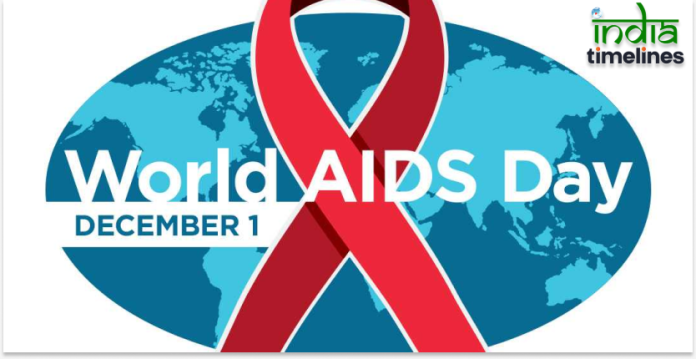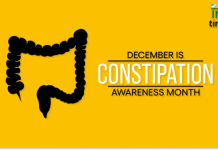
World AIDS Day, observed every year on December 1, is a significant global event dedicated to raising awareness about HIV/AIDS, supporting those living with the disease, and remembering those who have lost their lives to it. Initiated in 1988, it was the first-ever global health day and continues to serve as a powerful reminder of the global commitment to ending the HIV/AIDS epidemic.
The Importance of World AIDS Day
World AIDS Day plays a vital role in raising awareness and combating the stigma associated with HIV/AIDS. Despite medical advancements, HIV/AIDS remains a major public health issue worldwide. This day offers an opportunity to educate people, address misinformation, and promote empathy towards those affected by the virus.
Understanding HIV and AIDS
- HIV (Human Immunodeficiency Virus): HIV attacks the immune system, specifically targeting CD4 cells, which help the body fight infections. Left untreated, HIV can lead to AIDS.
- AIDS (Acquired Immunodeficiency Syndrome): AIDS is the most severe phase of HIV infection. People with AIDS have extremely weakened immune systems, leaving them susceptible to a range of serious illnesses.
Modern antiretroviral therapies (ART) enable people with HIV to live longer, healthier lives, reducing the virus in their bodies to undetectable levels, which significantly lowers the risk of transmission.
World AIDS Day 2024 Theme
Each year, World AIDS Day focuses on a specific theme to guide global initiatives and discussions. In 2024, the theme is “Ending the HIV Epidemic: Equitable Access, Empowerment, and Education.” This theme highlights the importance of reaching underserved communities, ensuring equal access to healthcare, and empowering people with the knowledge and resources they need.
Goals of World AIDS Day
- Raising Awareness: Increasing public understanding of HIV/AIDS, prevention methods, and treatment options.
- Promoting Testing: Encouraging people to get tested for HIV is crucial in managing and preventing further transmission.
- Fighting Stigma: Combating the discrimination faced by those with HIV/AIDS through education and empathy.
- Supporting Affected Communities: Offering support to individuals and families affected by HIV/AIDS and advocating for their rights and access to healthcare.
HIV/AIDS Statistics: A Global Perspective
- People Living with HIV: Around 38 million people globally are living with HIV.
- New Infections: Over 1.5 million new infections are reported every year.
- Deaths: Approximately 680,000 people die annually due to AIDS-related illnesses.
The Importance of Education and Prevention
Prevention remains a crucial aspect of fighting HIV/AIDS. Programs that promote safe practices, access to pre-exposure prophylaxis (PrEP), and regular testing play essential roles. Education initiatives help people understand how HIV is transmitted and encourage preventive measures.
Advancements in HIV/AIDS Treatment
Medical advancements in HIV treatment have drastically changed the outlook for those living with the virus. Antiretroviral therapy (ART) has been a game-changer, enabling individuals with HIV to achieve a suppressed viral load, meaning they cannot transmit the virus to others. Research continues to push forward, with hopes of a vaccine or cure on the horizon.
Global Efforts to End HIV/AIDS
Organizations worldwide, including UNAIDS, the World Health Organization (WHO), and local health ministries, are committed to ending the HIV/AIDS epidemic. Their goals align with the United Nations’ Sustainable Development Goals, particularly the target to end AIDS as a public health threat by 2030.
Supporting World AIDS Day
- Wear a Red Ribbon: The red ribbon is a universal symbol of solidarity and support for those living with HIV/AIDS.
- Get Tested: Knowing your status is crucial for personal health and prevention efforts.
- Educate Yourself and Others: Share information and resources about HIV/AIDS to raise awareness.
- Donate or Volunteer: Support organizations working towards HIV/AIDS research, awareness, and treatment access.
Conclusion
World AIDS Day is more than a day of remembrance; it is a day of action. By increasing awareness, advocating for equal healthcare access, and supporting those living with HIV/AIDS, we can work towards a future without this epidemic. Together, through empathy, education, and empowerment, we can make a difference in the global fight against HIV/AIDS.
FAQs
- What is the theme for World AIDS Day 2024?
The theme is “Ending the HIV Epidemic: Equitable Access, Empowerment, and Education.” - Why is the red ribbon a symbol of World AIDS Day?
The red ribbon represents solidarity, support, and awareness for those affected by HIV/AIDS. - How can I support World AIDS Day?
You can participate by raising awareness, getting tested, wearing a red ribbon, donating, or volunteering. - What is the difference between HIV and AIDS?
HIV is the virus that attacks the immune system, while AIDS is the advanced stage of HIV infection. - Can HIV be prevented?
Yes, prevention methods include practicing safe behaviors, taking PrEP, and regular testing.



































